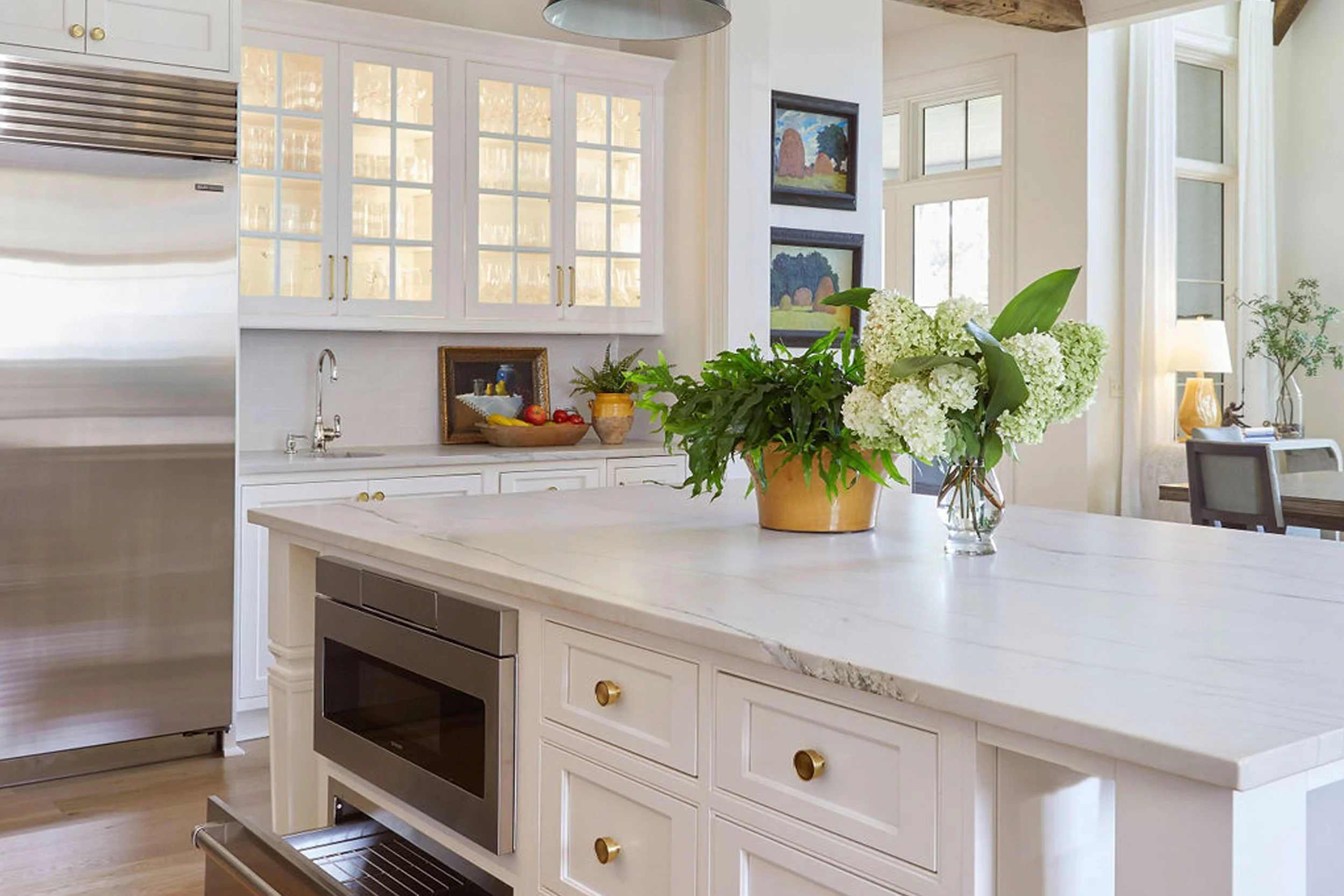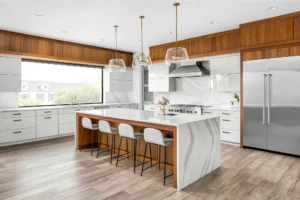Remodeling a kitchen is one of the most popular home improvement projects and for good reason. A beautifully updated kitchen increases the comfort, functionality, and value of your home. However, without a well-structured plan, it can also lead to budget overruns and unnecessary stress. That’s why understanding The Complete Guide to Kitchen Remodel Cost is essential before starting your renovation.
This guide breaks down the key components of a kitchen remodel budget covering materials, labor, and those often-overlooked contingency expenses to help you make informed decisions and stay on track financially.

1. Setting Your Kitchen Remodel Budget
The first step in any remodeling project is setting a realistic budget. Most kitchen remodels fall within a wide range from $15,000 for minor upgrades to $60,000 or more for high-end transformations. Factors such as the size of the space, the quality of materials, and the scope of the remodel heavily influence costs.
The Complete Guide to Kitchen Remodel Cost recommends starting by defining your renovation goals: Are you simply refreshing the space, or are you redesigning the layout, changing appliances, and updating plumbing and electrical systems? Your answer will determine the necessary budget tier.
2. Material Costs: What You Need to Know
Materials typically account for 40% to 50% of a kitchen remodel budget. This includes cabinetry, countertops, flooring, backsplash, paint, lighting, fixtures, and appliances. Prices can vary drastically depending on your preferences.
- Cabinetry: One of the largest expenses. Custom cabinets cost significantly more than stock or semi-custom options.
- Countertops: Options like quartz, granite, and marble are durable and elegant but come at a higher price. Laminate and butcher block are more budget-friendly alternatives.
- Flooring: Hardwood and stone are luxurious but pricier than vinyl or ceramic tile.
As you explore options, remember: The Complete Guide to Kitchen Remodel Cost advises balancing aesthetics with durability. Don’t compromise functionality for looks alone—especially in a high-traffic space like the kitchen.
3. Labor Expenses: A Critical Investment
Labor is another major component of your remodeling budget, typically representing 30% to 35% of the total cost. Skilled professionals such as electricians, plumbers, carpenters, and tile installers are essential for ensuring your kitchen is built to code and meets safety standards.
Depending on your location and the complexity of the work, hourly labor rates and timelines will vary. Hiring a general contractor to manage the project can simplify the process but may add 10% to 20% to your overall cost.
In The Complete Guide to Kitchen Remodel Cost, labor is positioned not just as a cost but as an investment. Quality workmanship can prevent future repairs and add value to your home long after the remodel is complete.
4. Contingency Fund: Expect the Unexpected
One of the biggest budgeting mistakes homeowners make is underestimating or ignoring unexpected costs. Structural issues behind walls, outdated wiring, or plumbing problems are common discoveries during demolition. That’s why The Complete Guide to Kitchen Remodel Cost strongly advises setting aside 10% to 20% of your budget as a contingency fund.
Planning for surprises gives you peace of mind. It also prevents frustrating compromises, such as downgrading materials last minute or halting the project mid-way due to a lack of funds.
5. Saving Opportunities Without Sacrificing Style
While a kitchen remodel is a significant investment, there are ways to save without cutting corners:
- Reuse where possible: If cabinets are in good shape, consider refacing them instead of replacing.
- Mix materials: Use high-end finishes on focal points and more economical ones elsewhere.
- Choose energy-efficient appliances: These may have a higher upfront cost but save money over time.
According to The Complete Guide to Kitchen Remodel Cost, informed compromises and strategic upgrades can stretch your budget without compromising on quality or design.
6. Timeline Considerations and Hidden Costs
Beyond material and labor, remember to account for logistics and temporary arrangements:
- Will you need to eat out or set up a temporary kitchen?
- Will your project require permits or inspection fees?
- What happens if delays arise?
Each of these adds to your total remodeling cost. In The Complete Guide to Kitchen Remodel Cost, homeowners are encouraged to take a holistic view not just of visible expenses but of lifestyle disruptions that may impact the project.
7. Final Thoughts: Plan Smart, Build Better
Every kitchen remodel is unique, but the key to a successful renovation lies in thoughtful planning and transparent budgeting. Whether you’re working with a contractor or managing the project yourself, take the time to outline your priorities, compare prices, and ask questions.
With the insights from The Complete Guide to Kitchen Remodel Cost, you’re equipped to avoid common pitfalls and create a kitchen that meets both your dreams and your budget.



